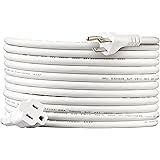Every seasoned craftsman or dedicated DIY enthusiast knows the sinking feeling: a crucial tool, once a reliable extension of your own hand, suddenly lies broken. Perhaps a screwdriver tip snapped under torque, a wrench rounded off a stubborn nut, or a hammer handle splintered from repeated impact. My own workshop has its fair share of these casualties, each one a testament to hard work, yet also a nagging reminder of potential waste. But what if these weren’t simply discards? What if a broken tool represented an opportunity for ingenuity, a blank canvas for a truly unique tool hack? This is precisely the kind of resourceful thinking demonstrated in the video above, offering a glimpse into the transformative power of creative repurposing.
The art of transforming obsolete or damaged equipment into valuable workshop assets extends far beyond mere cost savings. It embodies a sustainable mindset, drastically reducing waste while simultaneously fostering a deep connection with your tools and materials. Mastering advanced tool hacks elevates your craft, allowing you to fabricate custom solutions precisely tailored to specific challenges. Understanding the inherent properties of tool steel and various alloys becomes crucial when attempting these modifications.
The Philosophy of Advanced Tool Repurposing: Elevating Workshop Efficiency
Repurposing tools isn’t just about making do; it is about leveraging material science and design principles to create specialized instruments. Consider the environmental impact of discarding countless broken tools, which often end up in landfills, contributing to a cycle of consumption. Embracing innovative broken tool ideas transforms these liabilities into assets, pushing the boundaries of workshop efficiency and self-reliance. This approach also hones a craftsman’s problem-solving acumen, encouraging a deeper understanding of functionality.
Furthermore, the creative satisfaction derived from fashioning a custom tool from a former discard is immense, surpassing the simple act of purchasing a new item. Each successful repurpose adds a unique, often indispensable, implement to your arsenal, optimized for niche tasks. This level of customization is rarely available off-the-shelf, providing a significant competitive edge in precision work. Developing a keen eye for potential in seemingly useless components is a skill worth cultivating for any serious fabricator.
Transforming Common Breakages into Ingenious Solutions
Many common workshop failures present prime opportunities for sophisticated tool modification. The key lies in assessing the remaining viable material and its metallurgical properties. Identifying the optimal use for the undamaged sections of a broken tool requires both foresight and practical experience. Leveraging existing hardened steel saves significant time and effort compared to fabricating from raw stock.
The Humble Screwdriver’s Second Life: Precision Instruments
A screwdriver, particularly one with a hardened chrome vanadium steel shaft, offers excellent material for smaller custom tools once its tip is compromised. A flathead screwdriver with a bent or stripped tip can be reground into a precision marking knife, providing a sharp, durable edge for layout work. Additionally, its sturdy shaft can be expertly sharpened into a robust awl for piercing pilot holes in various materials, eliminating splintering. Furthermore, a smaller precision screwdriver shaft can be repurposed into a delicate scribe, ideal for intricate joinery or engraving tasks, showcasing exceptional versatility.
For those dealing with frozen or damaged fasteners, a broken screwdriver shank can be ground into a custom chisel for removing stubborn screw heads. The inherent strength of the shank ensures it can withstand percussive forces. Alternatively, the shaft can be heated and bent into a specialized hook or pick for retrieving small parts from confined spaces, proving invaluable in intricate assemblies. The remaining handle often provides a comfortable grip, maintaining user ergonomics.
Wrenches Beyond Tightening: Fabrication Jigs and Specialty Grips
Wrenches with rounded-out jaws or stripped ratcheting mechanisms are frequently retired prematurely. However, their robust construction and specific dimensions make them excellent candidates for repurposing into specialized fabrication jigs or clamping devices. For instance, a broken combination wrench can be precisely cut and welded to create a custom bending jig for small diameter rods or tubing, ensuring consistent angles. The hardened steel of the wrench body resists deformation during repeated use.
Moreover, the handle section of a larger open-end wrench can be modified into a powerful, compact clamp for securing components during welding or gluing operations. The leverage offered by the original wrench design can be cleverly exploited for enhanced gripping power. Certain wrenches can even be ground down to create custom-sized shims or spacers for calibrating machinery, offering unparalleled precision. This resourcefulness saves considerable time and expense on bespoke fixtures.
Hammers and Mallets: Custom Anvils and Striking Tools
When a hammer handle breaks, the head itself often remains in perfect condition, a dense block of hardened steel waiting for a new purpose. A ball-peen hammer head, for example, can be secured onto a sturdy base to serve as a miniature anvil for delicate metalworking tasks like forming small parts or riveting. Its rounded face provides an ideal surface for controlled deformation without marring. Furthermore, its mass provides the necessary inertia for effective striking operations.
A smaller claw hammer head, once separated from its handle, can be sharpened and repurposed as a robust scoring tool for masonry or plaster. Its weight aids in consistent penetration, while the claw can be reground for leverage. Additionally, the flat face of a sledgehammer head, if still intact, can be integrated into a larger press or forming jig for heavy-duty applications. These broken tool ideas harness the material’s original intent while adapting its form factor.
Advanced Fabrication for Custom Tooling: Safety and Precision
Implementing sophisticated tool hacks often requires advanced fabrication techniques, including welding, grinding, and machining. When modifying hardened tool steel, understanding the effects of heat treatment and potential embrittlement is paramount. Proper heat management during grinding prevents loss of temper, which could compromise the tool’s integrity and safety. Always wear appropriate personal protective equipment, including eye protection and gloves, during these processes.
Precision grinding with specific abrasives allows for the creation of intricate profiles, transforming a generic piece of steel into a highly specialized instrument. Welding components from different tools demands careful consideration of material compatibility and filler rod selection to ensure strong, durable joints. Furthermore, integrating ergonomic handles or grips, perhaps salvaged from other broken tools, enhances the usability and safety of the newly fashioned implement. Attention to detail at every stage is critical for successful outcomes.
Workshop Efficiency Through Clever Modifications
Beyond creating individual tools, clever modifications using old components can drastically improve overall workshop efficiency. Custom storage solutions, such as wall-mounted holders fabricated from old rebar or steel strapping, keep frequently used tools organized and accessible. These bespoke fixtures ensure a clutter-free workspace, streamlining workflow. Moreover, specialized jigs and fixtures, often overlooked, are crucial for repeatable precision.
For example, a series of metal offcuts from a previous project can be welded into a custom stop block for a miter saw, guaranteeing identical cuts across numerous workpieces. Old drill bits, even those too dull for drilling, can be repurposed as alignment pins for assembly jigs, ensuring perfect component registration. These seemingly minor adaptations accumulate into significant time savings and enhanced accuracy, optimizing every aspect of production. Such small innovations dramatically impact a workshop’s productivity and output.
Beyond the Obvious: Unexpected Tool Transformations
The true genius of tool hacking emerges when contemplating less conventional transformations, pushing the boundaries of material and function. For instance, the hardened gears from a defunct hand drill can be repurposed as intricate stamps for metal or leatherworking, creating unique decorative elements. Their precise tooth profiles offer a distinctive aesthetic. Additionally, the robust springs from a broken vise can be integrated into custom clamping systems or spring-loaded jigs for quick setup.
Even the robust housing of a retired power tool, like a angle grinder or circular saw, can be modified into a protective enclosure for a custom-built sensor or small control unit. Its durable construction shields sensitive components from workshop hazards. These innovative tool hacks exemplify resourcefulness, converting seemingly useless components into highly functional, purpose-built assets. Cultivating this mindset transforms a workshop into a hub of continuous innovation.
Ultimately, the challenge of a broken tool is not a setback but an invitation to innovate, to apply engineering principles and creative thinking to everyday problems. The resourcefulness inherent in these tool hacks strengthens both the craftsman and the workshop itself, fostering a culture of sustainable ingenuity. Every modified tool tells a story of overcoming limitations, demonstrating a profound dedication to the craft and a mastery of materials. This commitment to innovation keeps the workshop dynamic and continuously evolving.










